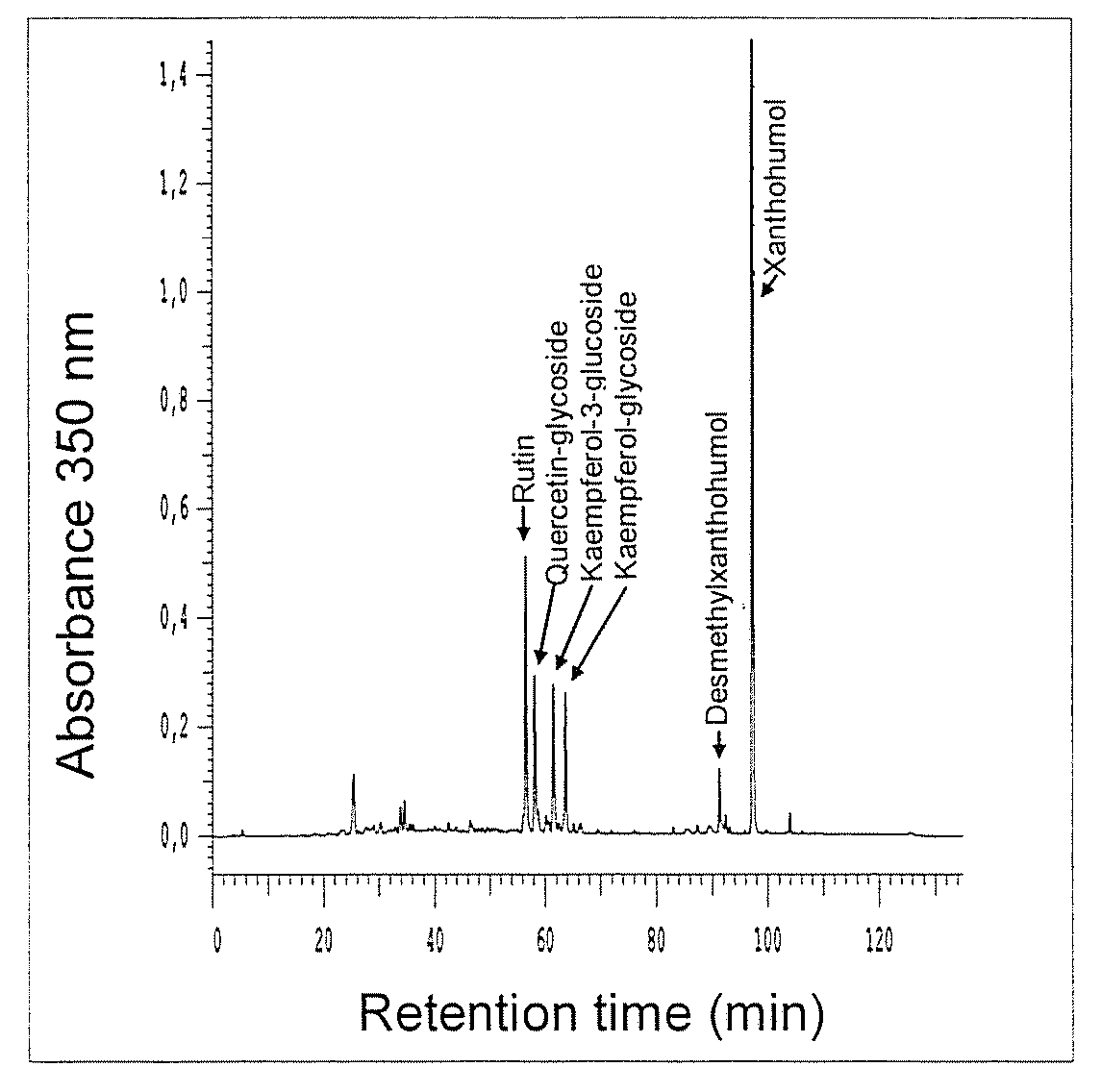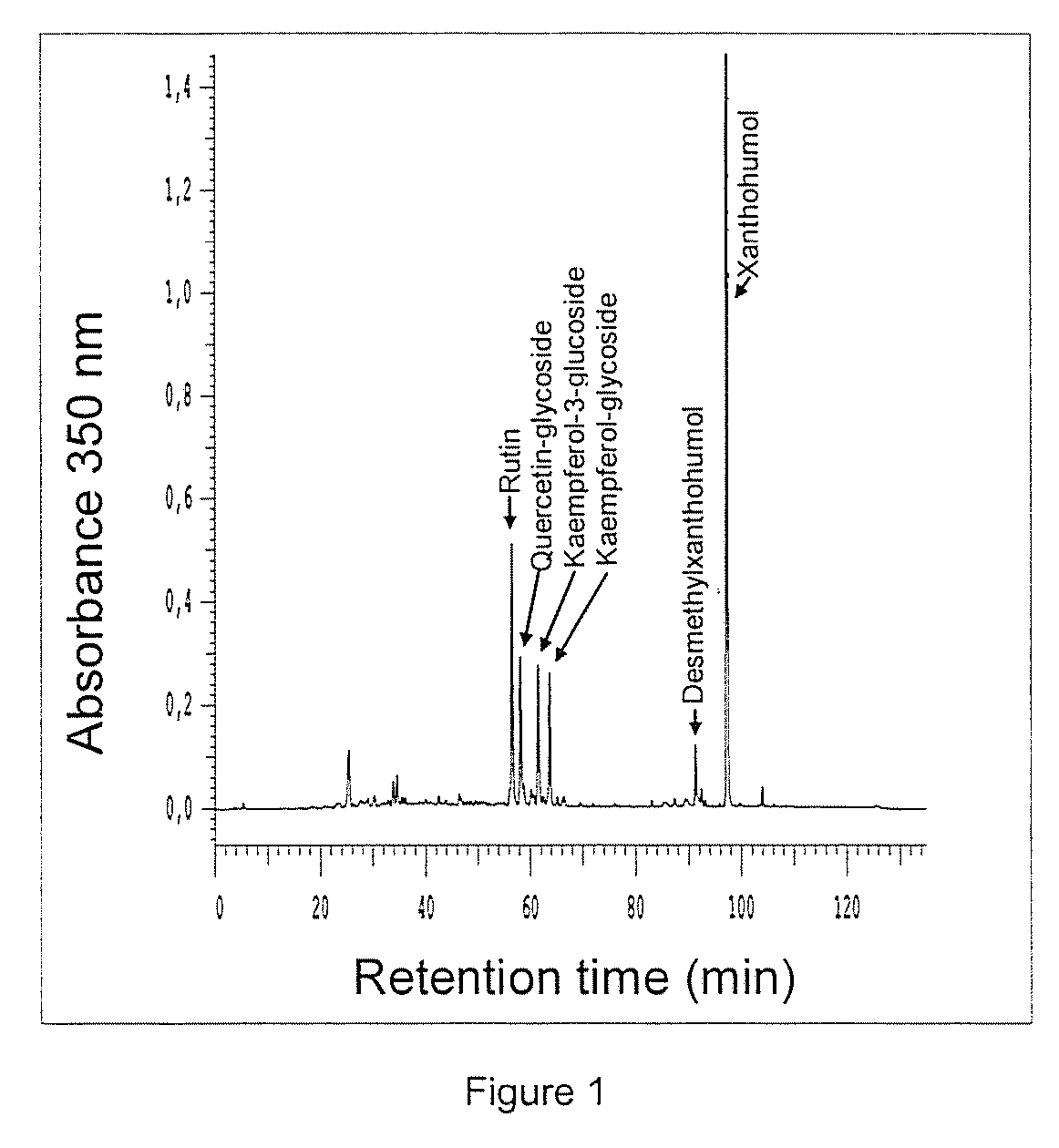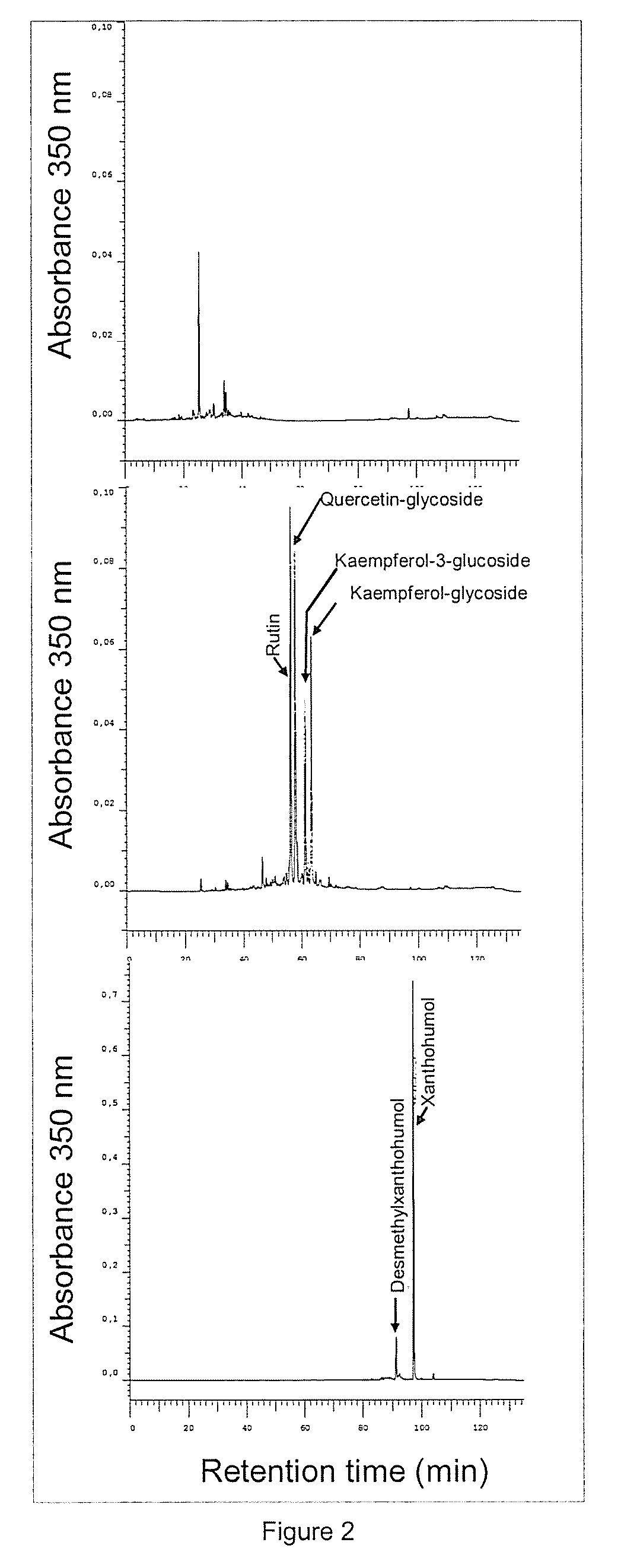Use of hop polyphenols in beer
a technology of polyphenols and hops, applied in the field of new brewing methods, can solve the problems of unsatisfactory bitterness, inconvenient use of whole hops in brewing, and large variation in the amount of aromatic and flavoring constituents in hops
- Summary
- Abstract
- Description
- Claims
- Application Information
AI Technical Summary
Benefits of technology
Problems solved by technology
Method used
Image
Examples
example 1
Preparation of Hop Polyphenol Extracts
[0061] Materials and Methods
[0062] Materials
[0063] Hop pellets cv Saaz, Hersbrucker Spät and Magnum, as well as the vegetative waste material of lupulin-enriched pellets T45 cv Hallertau Select, were obtained from Joh. Barth & Sohn (Nürnberg, Germany). Commercial spent hops cv Saaz and cv Magnum were obtained from Botanix ltd. (Paddock Wood, England). In-house spent hops were obtained by supercritical CO2 extraction of hop pellets T90 cv Magnum and cv Hersbrucker Spät at 250 atm and 50° C., using a Dionex SFE703 extractor.
[0064] Evaluation of Polyphenolic Preparations
[0065] The reducing power of the polyphenolic preparations was assessed by spectrophotometric measurement of the discoloration of the 1,1-diphenyl-2-picrylhydrazyl (DPPH) radical at 525 nm according to Kaneda et al (1995). Alternatively, reducing power was determined by the ITT test, in which discoloration of 2,6-dichlorophenol indophenol by reduction by the beer components is ...
example 2
Sensory Evaluation of Hop Polyphenol Extracts
[0094] Materials and Methods
[0095] Extraction of Different Hop Essential Oil Fractions
[0096] Preparation of Total Essential Hop Oil
[0097] Prior to extraction, hop pellets T90 cv Saaz were disrupted using a pestle and mortar to facilitate the extraction. The vegetative matter was then immediately extracted using a Dionex SFE-703 supercritical fluid extractor (Dionex, Sunnyvale, 94086 Calif., USA). Carbon dioxide was obtained from Air Liquide (SFE / SFC grade; Air Liquide Benelux, Liège, Belgium) The SFE equipment consists of three main parts: a thermostatic sample oven containing up to eight extraction cells, a flow restrictor at the end of each extraction line, and a cooled cryo rack (approx. 5° C.) holding the collection vials. The collection vials are screw-capped glass containers wherein a central inner glass tube is suspended to the closing septum. Trapping of the extracted material is essentially based on cold solvent trapping, alt...
example 3
Addition of Hop Polyphenol Extract During Mashing and Wort Boiling
[0123] Materials and Methods
[0124] Preparation of Experimental Beers
[0125] Four brews were prepared in a pilot scale brewery (4 hl) following the same process for sweet wort production. Brewing was done as follows: grist: pilsner malt (80 kg), coarse milling (two-roller mill); brewing water: reverse osmosis (2.8 hl) with addition of Ca2+ (40 mg / l); brewing scheme: 45° C. (15 min), 52° C. (20 min), 63° C. (30 min), 72° C. (20 min), 78° C. (120 min, including wort filtration with lauter tun); pH of the mash controlled at pH 5.5 by ISFET electrode and addition of lactic acid; wort boiling: 60 min (evaporation: about 8%); wort clarification: whirlpool; addition of Zn2+ (0.2 mg / l) to clarified wort; original wort gravity: 12° P; pitching rate: 107 cells / ml; fermentation: 9 days at 10° C.; hopping: brews A and B, addition of isomerised hop acid extract (20% iso-α-acids w / v, Botanix ltd., Paddock Wood, England), at end of...
PUM
| Property | Measurement | Unit |
|---|---|---|
| pressure | aaaaa | aaaaa |
| pressure | aaaaa | aaaaa |
| flow rate | aaaaa | aaaaa |
Abstract
Description
Claims
Application Information
 Login to View More
Login to View More - R&D
- Intellectual Property
- Life Sciences
- Materials
- Tech Scout
- Unparalleled Data Quality
- Higher Quality Content
- 60% Fewer Hallucinations
Browse by: Latest US Patents, China's latest patents, Technical Efficacy Thesaurus, Application Domain, Technology Topic, Popular Technical Reports.
© 2025 PatSnap. All rights reserved.Legal|Privacy policy|Modern Slavery Act Transparency Statement|Sitemap|About US| Contact US: help@patsnap.com



